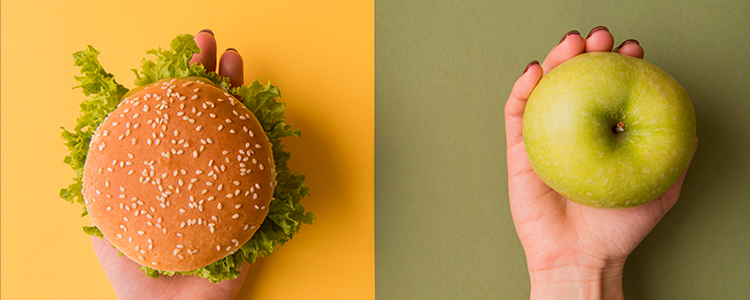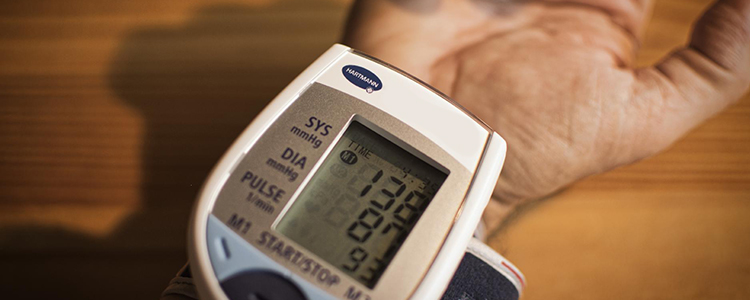Dubbed by experts as the silent killer, hypertension can be found in almost 25% of us in Singapore who are between 30 to 69 years old1. The condition, which is also referred to as high blood pressure, is a prevalent issue in our nation, especially as we continue to age. According to the Ministry of Health (MOH), hypertension is even more common in older age groups, with more than 50% of people between the ages of 60 to 69 experiencing the condition2. This means that the phenomenon continues to be exacerbated for those of us who are middle-aged, due to our changing lifestyles and stressful work lives. But even as the likelihood continues to rise for us as we get older, do we really know what it means to have hypertension?
Much like what its name suggests, the condition refers to a phenomenon in which our blood is consistently pumped around the heart at too high a pressure3. This causes the heart to work harder when pumping blood, and can cause our arteries to harden or even lead to heart failure in the long run. In more technical terms, hypertension is indicated by a systolic BP measuring more than 140mmHg, or a diastolic BP of over 90mmHg, or both. With such pressing statistics and consequences, how can we kickstart the prevention journey for ourselves and our employees? Let’s delve into this by beginning with the main culprits of hypertension.

Causes and risk factors
The contributing risk factors of high blood pressure can be split into two major groups: the modifiable and non-modifiable ones. The former group consists of adjustable lifestyle choices, namely:
- Sedentary lifestyles
- Obesity
- Smoking
- Alcohol consumption
- Unhealthy diets (e.g. excessive consumption of processed or pre-packaged foods, or those high in sodium, saturated fats and trans fats)
Being unhealthy, or even obese, means that our bodies will require more blood to supply oxygen and nutrients to our tissues. This increase in the volume of blood in our blood vessels further translates to a greater pressure on the artery walls. Similarly, poor diet choices such as consuming too much sodium can also reduce our kidney’s ability to remove water from our bodies, resulting in high blood pressure from the extra fluid retention. It should be noted, however, that these consequences are not set in stone, especially with modifiable factors. We have the ability to control and adjust our lifestyle changes for the better to prevent high blood pressure, unlike the latter group concerning non-modifiable factors.
Unfortunately, these non-modifiable risk factors fall outside of our control when it comes to hypertension, and can include causes such as:
- Age, especially when older than 65 years old
- Family history of hypertension
- Co-existing diseases such as diabetes or kidney disease
High blood pressure can be hard to detect, as the condition can be brought on without any symptoms or warning signs. This makes it even harder for individuals living with these non-modifiable risk factors to identify it.

Long term complications
The complications of hypertension stem primarily from the development of atherosclerosis, which is the hardening and narrowing of the arteries4. When high blood pressure damages the internal layers of the arteries, plaque begins to build up in the damaged areas. Plaque build-up blocks off parts of the artery, which ultimately lead to their narrowing and hardening5. If the blocked arteries are left untreated or inadequately treated, they reduce the flow of blood and oxygen to vital organs like our heart and kidney6, which may lead to their failure. In extreme cases, hypertension can even cause blood vessels to burst, cutting off oxygen and blood to the brain and causing a stroke. The following is a list of possible health complications that are also associated with hypertension:
- Coronary heart disease
- Heart failure
- Stroke
- Peripheral artery disease (narrowing of the blood vessels of the limbs)
- Kidney failure
- Vision loss

Addressing hypertension as employers
With a greater knowledge of the causes and complications of high blood pressure, the question now becomes: what can we do to manage this as a community? Knowing that we are often swamped with work or other commitments, it can be hard for some of us to find time to visit the doctor, while others may be at a loss as to where to begin with their health journey. Employees may even be reluctant to use their days off for health check-ups, as it would mean that they will have to sacrifice their off-days to do so. With this in mind, encouraging your employees to go for an annual health check-up may be one of the best ways to maintain a healthy and productive workforce, especially since that may be the only opportunity for some of them to get a gauge on their health. Hypertension as a condition is hard to detect, so these events provide an invaluable opportunity for staff members to have their blood pressure measured and evaluated by health professionals - a process that is generally quick and painless. On a wider level, these corporate health fairs are also great for supporting employee well-being, and for providing motivation for everyone involved to better understand as well as engage in healthier practices.
It should be noted, however, that our focus on health should not solely hinge on support from health professionals. Cigna’s idea of Whole Person Health highlights the importance of a more holistic approach, especially one that involves both the employer and the employee. This means that while employers should do their best to create supportive environments for their staff, employees should also learn to recognise the impact that their lifestyles have on their mental and physical well-being. In the context of blood health, this involves a personal responsibility to monitor and manage personal body mass indices (BMI) and blood pressure levels, as well as a willingness to engage in self-care. As such, here are some self-care tips for hypertension prevention which can be shared to get everyone started:
- Reduce salt intake to the recommended portion of 5g per day
- Limit individual consumption of foods high in saturated and trans fats
- Monitor and control cholesterol intake
- Increase fibre consumption, such as fruits, vegetables and whole grains
- Reduce alcohol consumption to no more than 2 drinks per day
- Cut down on smoking and tobacco use as much as possible
- Exercise regularly, for around 150 minutes per week
- Reducing and managing mental stress
Over to you
Given the prevalence of hypertension and its lack of symptoms, the risk to our health is extremely significant as it could trigger fatal complications without any warnings. The only clear indication of hypertension is blood pressure figures, which come only with a blood pressure test and an evaluation from health professionals. Coupled with better diet and lifestyle choices, it is never too late to prevent high blood pressure for ourselves and our employees. For this reason, organising regular mandatory check-ups for the company is essential as it allows staff members to measure and take note of their blood pressure figures, as well as receive professional advice.
Here at Cigna, we also have some tools that can help you and your employees manage hypertension better, such as the Chronic Disease Management Programme. This programme offers 2 paths of health management and lifestyle management. Both paths help users via 3 main aspects of engagement, assessment and treatment, which provides comprehensive solutions to ensure that the entire health journey is well-covered. Video consultations, follow-ups and medical delivery are also included so that users can manage their condition without having to make multiple trips to the clinic. Beyond the provision of convenience, we are ultimately dedicated to improving services and experiences when it comes to healthcare. Contact us to find out how else we can assist you and your employees today.
Sources:
1. Mount Elizabeth Hospital. (2016). 5 Causes of High Blood Pressure.
2. Mount Elizabeth Hospital. (2016). 5 Causes of High Blood Pressure.
3. HealthHub. (2019). High Blood Pressure.
4. Nakanishi, R., Baskaran, L., Gransar, H., Budoff, M., Achenbach, S., & Al-Mallah, M. et al. (2017). Relationship of Hypertension to Coronary Atherosclerosis and Cardiac Events in Patients With Coronary Computed Tomographic Angiography. Hypertension, 70(2), 293-299.
5. National Heart, Lung, and Blood Institute. (2018). Atherosclerosis.
6. World Health Organisation. (2019). Hypertension.


